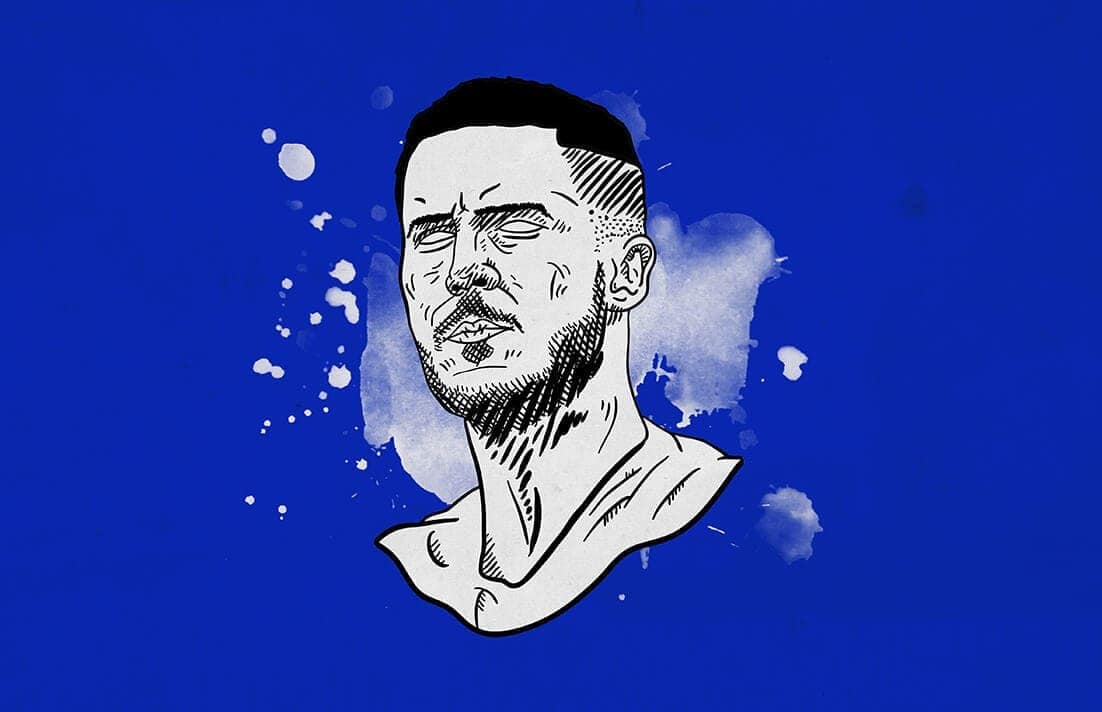Saturday evening’s match between Chelsea and Man City saw several different interesting tactical battles. Unusually both sides decided to play without a recognised forward. Chelsea used Eden Hazard as their striker in this match instead of occupying the left-hand side of the attacking three as he would normally do.
Sarri thought that they would have the opportunity to play on the counter-attack which hasn’t been an option so far this season. The use of Hazard in the striker positioned was designed to provide Chelsea with a more mobile and ‘fast’ attack.
Man City’s attacking structure
During the game, Man City adopted their usual structure in the attacking phase which can be described as the W-W.

The advanced positioning of Manchester City leaves plenty of space behind the defence which can be exploited. This, however, is reliant on being able to build up effectively from the back instead of playing long balls up to an isolated striker. With the back five providing support behind the ball Chelsea aimed to counter-attack at speed exploiting the advanced positioning of the front five.
Chelsea sat back in a mid-block and looked to protect the dangerous central areas. Especially in the first half, they were pushed back into deep areas which made it difficult for them to build their attacks. Due to Chelsea’s compact defensive structure, Man City often played passes into wide areas which made it more difficult to transition into attack when possession was regained. The further Chelsea were pushed back the more Hazard became isolated and the lower the quality of passes that were played into him.
Chelsea’s determined passing
Throughout the match, whenever Chelsea won possession they tried to build their attacks through the pitch instead of playing a longer ball up the pitch. The use of Hazard as the striker limited Chelsea in this regard as he isn’t renowned for his hold up play in the same way a player like Giroud is.
The ability to pass out from defence was an important factor in being able to bring Hazard into the game and advance the team up the pitch. The front three of Willian, Hazard and Pedro possess a great deal of pace which Chelsea planned to use to exploit the spaces behind the Man City defence. In the first half of the match, this is something that Chelsea struggled to do, which in turn brought more pressure on the defence.
There were several occasions in the first half when the Chelsea defenders were forced to play longer passes into Hazard as they had a lack of options to play through midfield. Hazard did apply pressure to the defenders and harried them in possession but often his teammates were too far away and Man City were able to play around the one-man press.
At times, Hazard was able to position his body in between the ball and the defender which caused the defender to make fouls on him. This was important to relieve pressure on the defence and allow the team to advance up the pitch.
Second half improvement
Sarri made adjustments at half-time which saw Kovacic and Kante taking up positions higher up the field when Chelsea were attempting to build attacks. This enabled them to progress the ball more effectively into advanced areas.
Chelsea began to win possession in central areas which allowed them to play more vertical passes into the front three players. This better enabled them to use their speed to transition effectively into Man City’s defensive third.
Whilst these changes don’t necessarily show in the stats (10 attempted first-half passes to 12 and 2 attempted first half dribbles to 4) the increased involvement that Hazard had in the second half this definitely change in approach certainly allowed him to receive the ball in more dangerous areas.
The advanced positioning of the midfield allowed Hazard to push himself further forward, which threatened the space in behind.
Future implications
The relative success of using Hazard as the striker provides an interesting option for Sarri. Neither Giroud nor Morata have set the world alight this season; Giroud has struggled for goals and Morata has struggled to bring others into play.
At Napoli, Sarri converted Mertens into a striker with great effect – scoring 44 goals in two seasons – which offers a blueprint if Sarri chooses to use him in this manner. Hazard’s dribbling could prove to be a useful skill that neither of the other two strikers possess. The ability to dribble the ball into advanced areas is particularly effective against sides who press in an aggressive man-marking style. This man marking style is used by a large number of Premier League sides.
If you love tactical analysis, then you’ll love the digital magazines from totalfootballanalysis.com – a guaranteed 100+ pages of pure tactical analysis covering topics from the Premier League, Serie A, La Liga, Bundesliga and many, many more. Get your copy of November’s issue for just £4.99 here or preorder the first of TWO December issues right here.






Comments